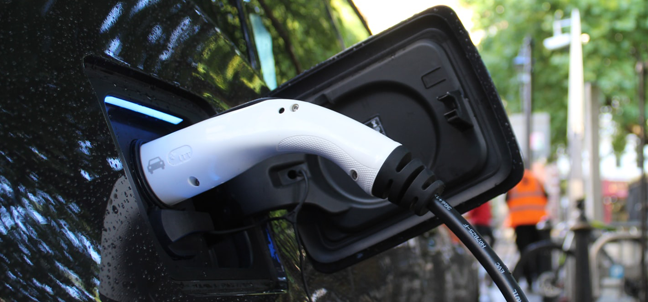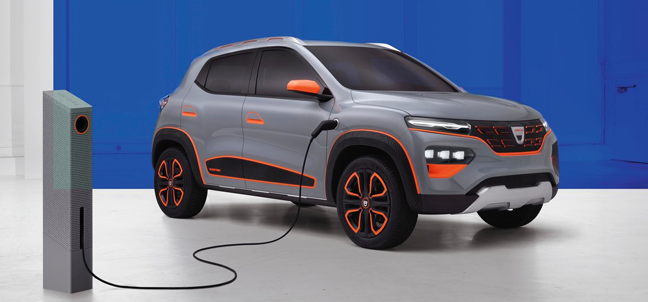Emissions from cars, vans, lorries and buses are not only bad for our planet, but they’re also bad for our health. Battery electric cars made up 54 per cent of all new cars sold in 2020, up from 42 per cent in 2019 and from just one per cent of the overall market a decade earlier. This increase is due to the constant demand for protecting our planet, our health but also advances in technology which makes electric cars a more feasible purchase than 10-years ago.
If you are a total novice to the world of EV’s and electric car charging at home, this guide is perfect for you!
What is an Electric Car?
An electric car differs from a traditional car in one key way: electricity from a battery is used to power the wheels instead of petrol or diesel. One or more battery powers the car, therefore it does need to be plugged into a power source, either the mains or a hub which diverts renewable energy from PV; for example, to charge the battery. Electric cars are typically quieter, feel lighter to drive and have no exhaust emissions, making them a clear air alterative.
How Does an Electric Car Work?
Electric cars work by being plugged in and charged up! Imagine it the same way you charge your phone overnight, it gives it all the power it needs to operate during the day, then when you go to bed at night, you charge it up again. An electric car works on this very same principle, charge the battery and the vehicle will run. Of course, there is a lot of technology that goes into this, if you are interested in the tech, you can read an article about how a Tesla battery works.
What is Electric Car Charging?
Electric car charging is the parallel process of filling your car up at a fuel station. With a traditional vehicle which runs on petrol or diesel, we know that when it runs low, a trip a fuel station is in order. Electric car charging is the same process, except for you plug the vehicle into a charging point to refill the battery.
Electric car charging can be done in a number of ways, including at-home charging points, public charging points or even workplace charging points. Most electric car owners choose to charge their EV’s at night, just the same as you would with charging your mobile phone.

How to Charge an Electric Car at Home
You can charge your electric car at home with ease, whereas 10-years ago the technology was less accessible, now pretty much anyone with a property and packing space can have electric car charging at home. Most electric car owners opt for a dedicated home charging point. Depending on your choice of home charger stipulates the features which come with it.
zappi for example has the option to utilise 100% green energy generated from your Solar PV or wind generation. So if you are environmentally conscious or already power your home through renewable energy, you can charge your car at home in the same way.
How Much does Electric Car Charging at Home Cost?
Electricity suppliers traditionally charge their customers a standard rate, usually between 14 – 17p per kWh. It doesn’t matter if the supplier’s cost price goes down, you the customer are still charged the same rate.
The cost of charging said electric car depends on many factors, including if you’re using electricity from the grid or your own PV. However, for a simple calculation, to work out how much you could save in the long run; for a typical electric car with a 60kWh battery and around a 200-mile range, electric car charging at home will cost around £8-£9 for a full charge.
What is the Cost of Installing an Electric Car Home Charger?
The zappi eco charger is available from just £695.
However, the government have many different grants, for example OZEV; available to help reduce the cost down.
The list of available .gov grants are as follows: –
Electric Vehicle Homecharge Scheme (EVHS)
Save Up To £350 On A Home Charger such as the 7kWh zappi charger
Plug-In Electric Car Grant
Save up to £3000 on the purchase of an eligible Electric Vehicle
Workplace Charging Scheme (WCS)
The workplace charge scheme is a voucher-based initiative, designed to support the up front costs of the purchase and installation of electric charge points such as the 22kWh zappi charger

How Long Does an Electric Car Take to Charge?
What Are the Different Types of Electric Car Charging?
Charging an electric vehicle is a lot like charging your mobile phone, you need to connect the battery to a power source. These come in various power voltages. Typically speaking, the higher the voltage, the quicker you can transfer power to the car, therefore quicker the charge. Although it doesn’t just come down to this, there is a maximum charging rate based on the kilowatt supply, but each model of EV will also have it’s own maximum charging rate.
How Long Does an Electric Car Take to charge?
Slow
A slow charge typically a 3.5kW output. This involves plugging your car into a typical three-pin electrical outlet. This can be a convenient way of charging for homeowners, who could take advantage of low energy tariffs, the output does mean it will take longer to charge.
Fast
A fast charge is typically anywhere between 7kW and 22kW electrical output. Most dedicated home charging points and public charging points are fast chargers. This is ideal to use when your EV is parked up for a few hours, for example in work, or while shopping.
Rapid
A fast charge is typically anywhere between 50kW and 350kW output. Rapid chargers are the fastest way to charge up, especially when on the move. They are more typically stationed at service stations and along motorways in the UK. Tesla, for example, offer ultra-rapid charging which is usually between 150-350kW of charge.
Can All Vehicles Use the Same Electric Car Charging?
Electric vehicles use different charging cables and plugs based on their make and model, modern EV’s will use a type 1 or type 2 socket, which is used for both slow and fast charging. But when it comes to rapid charging that’s a whole different ball game. However, as rapid or ultra-rapid chargers are typically public chargers, they do integrate with every EV on the market currently. The only draw back to this, is that they all seem to have a different setup. Whether it be pay by contactless at the charge point itself, or register for an account to charge. There is currently no uniform standard. But, that’s much the same with most things, car parks for example. Some require change, others card, other pay by text.
Can An Electric Car be Charged While Driving?
Unlike self-charge Hybrid vehicles, typically electric cars cannot charge themselves while being driven. They do require to be plugged in to a power source to recharge the battery. Some hybrid vehicles can self-charge, using the kinetic energy generated from activities such as breaking. Some electric car manufacturers are researching self-charging electric cars or means of charging a battery on the move, but it isn’t something market-ready yet!
What is the Best At-Home Electric Car Charging Option?
If you are purchasing at-home electric car charging, a zappi is highly recommended as it will fit all type 1 and type 2 connectors. You can find more information about the zappi and some frequently answered questions within our zappi FAQ’s.